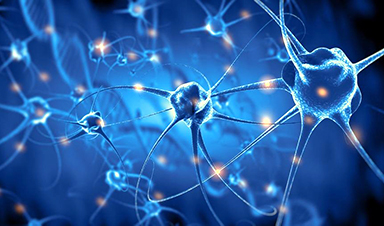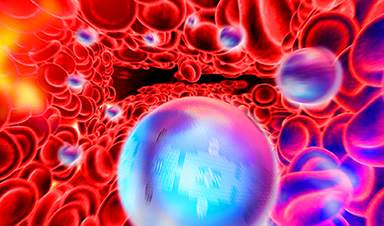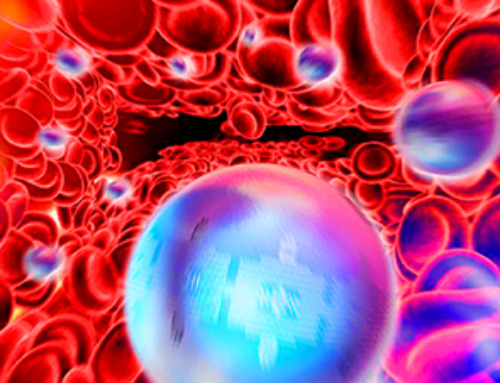Emerging research on nerve repair has consisted of MXenes being used to improve nerve guidance conduits, which would also enhance its subsequent electrical conductivity. This pre-proof research has been submitted in the journal, Additive Manufacturing.
The Need for Advanced Nerve Guidance Conduits
The peripheral nervous system is a little different from the central nervous system in that these nerves have a strong potential for regeneration and this can be through nerve grafting.
Nerve grafting is the gold standard for peripheral nerve injuries that do not have the ability to be bridged through direct epineural suturing.
A nerve guidance conduit can be described as an artificial nerve graft, which is able to guide axonal regrowth for facilitating nerve regeneration, and the use of nerve conduits have been used for decades for the treatment of peripheral nerve injury. The significance of these grafts can be found within the severity of peripheral nerve injuries.
Peripheral nerve injuries are a very significant health problem affecting 2.8% of trauma patients per year and this injury can cause destruction, damage or crushing of the peripheral nerve. This type of disorder can result in changes in sensation, with symptoms such as, decreased sensation that can cause numbness and tingling, as well as burning, shooting, and sharp ‘electrical’ pains.
The peripheral nerve consists of bundles of endoneurium wrapped axons bundled into fascicles that are wrapped in perineurium. The function of Schwann cells provides a myelin sheath that increases the conduction for myelinated nerves.
The main mechanisms behind peripheral nerve injuries can include stretching, compression and transection.
Compression of vascular structures can cause ischemic injury and direct nerve, or myelin compression can also lead to peripheral nerve injury. Additionally, transection, which can consist of cutting the nerve in a partial or complete manner can also lead to this type of injury. This mechanism can affect sensory and motor nerves and affect the quality of life of trauma patients.
The need for a novel and innovative strategy to improve nerve guidance conduits in peripheral nerve repair would enable the reduction of this issue and increase the health of those affected.
Nerve guidance conduits have been used as a bridging substrate that is able to provide temporary mechanical support, in order to allow transected nerves to sprout over the nerve gap, as well as aiding in the inhibition of fibrous tissue infiltration. The use of these conduits has been used commonly as an alternative implant for peripheral nerve repair.
Over recent years, the advancements in this field have consisted of novel materials to develop nerve guidance conduits and this has included poly-L-lactic acid (PLLA) due to its properties such as good biodegradation and processibility. However, its non-electrically conductive material has illustrated its lack of compatibility with reconstructing the conductivity of nerves as it would lead to a lack of electrical signal transduction as well as ineffective coordination of cellular function and nerve regeneration.
These challenges with the use of PLLA have led researchers to look towards other materials and the innovative solutions that nanotechnology provides, such as graphene oxide, gold nanoparticles and MXene.
The researchers of this pre-proof study have utilized MXene, which is a two-dimensional layered transition metal carbide, due to its impressive properties such as superior electrical conductivity as well as carrier mobility. Additionally, this nanomaterial has a remarkably useful surface that is high in hydrophilic functional groups, and this can enhance cell attachment, which further illustrates the potential of MXene as a candidate for fabricating conductive nerve guidance conduits.
This potential of MXene resulted in an innovative experiment consisting of creating effective MXene nanosheets that were coated on the surface of PLLA particles and ultimately produced a three-dimensional continuous conducive network.
This pre-proof research may advance current technology within this field as it enables a continuous pathway for effective and efficient charge transmission, and this could ultimately increase the electrical conductivity levels of current nerve guidance conduits.
Additionally, the use of 3D printing or laser additive manufacturing in this process is significant as it provides the ability to produce precise components of any complex structure through the use of a path-controlled laser beam that is able to fabricate products layer by layer.
The addition of this method for this research ensured that the network structure was retained as well as tight MXene contact which aided in providing a strong path for electronic transmission.
Future Outlook
Advancements such as through this research can be significant for patients with peripheral nerve injury as even with early diagnosis and accurate nerve repair, the functional recovery of this injury may never be the same as before the injury occurred.
The use of this nanotechnology innovation could further biomedical research and possibly change this experience for patients with higher recovery potential.
This study could be used to advance fields such as nanotechnology as well as regenerative medicine and this research can only be furthered through large-scale experimentation in order to evaluate the use of MXene for enhancing nerve cell responses for clinical patient care.
News
Fever-Proof Bird Flu Variant Could Fuel the Next Pandemic
Bird flu viruses present a significant risk to humans because they can continue replicating at temperatures higher than a typical fever. Fever is one of the body’s main tools for slowing or stopping viral [...]
What could the future of nanoscience look like?
Society has a lot to thank for nanoscience. From improved health monitoring to reducing the size of electronics, scientists’ ability to delve deeper and better understand chemistry at the nanoscale has opened up numerous [...]
Scientists Melt Cancer’s Hidden “Power Hubs” and Stop Tumor Growth
Researchers discovered that in a rare kidney cancer, RNA builds droplet-like hubs that act as growth control centers inside tumor cells. By engineering a molecular switch to dissolve these hubs, they were able to halt cancer [...]
Platelet-inspired nanoparticles could improve treatment of inflammatory diseases
Scientists have developed platelet-inspired nanoparticles that deliver anti-inflammatory drugs directly to brain-computer interface implants, doubling their effectiveness. Scientists have found a way to improve the performance of brain-computer interface (BCI) electrodes by delivering anti-inflammatory drugs directly [...]
After 150 years, a new chapter in cancer therapy is finally beginning
For decades, researchers have been looking for ways to destroy cancer cells in a targeted manner without further weakening the body. But for many patients whose immune system is severely impaired by chemotherapy or radiation, [...]
Older chemical libraries show promise for fighting resistant strains of COVID-19 virus
SARS‑CoV‑2, the virus that causes COVID-19, continues to mutate, with some newer strains becoming less responsive to current antiviral treatments like Paxlovid. Now, University of California San Diego scientists and an international team of [...]
Lower doses of immunotherapy for skin cancer give better results, study suggests
According to a new study, lower doses of approved immunotherapy for malignant melanoma can give better results against tumors, while reducing side effects. This is reported by researchers at Karolinska Institutet in the Journal of the National [...]
Researchers highlight five pathways through which microplastics can harm the brain
Microplastics could be fueling neurodegenerative diseases like Alzheimer's and Parkinson's, with a new study highlighting five ways microplastics can trigger inflammation and damage in the brain. More than 57 million people live with dementia, [...]
Tiny Metal Nanodots Obliterate Cancer Cells While Largely Sparing Healthy Tissue
Scientists have developed tiny metal-oxide particles that push cancer cells past their stress limits while sparing healthy tissue. An international team led by RMIT University has developed tiny particles called nanodots, crafted from a metallic compound, [...]
Gold Nanoclusters Could Supercharge Quantum Computers
Researchers found that gold “super atoms” can behave like the atoms in top-tier quantum systems—only far easier to scale. These tiny clusters can be customized at the molecular level, offering a powerful, tunable foundation [...]
A single shot of HPV vaccine may be enough to fight cervical cancer, study finds
WASHINGTON -- A single HPV vaccination appears just as effective as two doses at preventing the viral infection that causes cervical cancer, researchers reported Wednesday. HPV, or human papillomavirus, is very common and spread [...]
New technique overcomes technological barrier in 3D brain imaging
Scientists at the Swiss Light Source SLS have succeeded in mapping a piece of brain tissue in 3D at unprecedented resolution using X-rays, non-destructively. The breakthrough overcomes a long-standing technological barrier that had limited [...]
Scientists Uncover Hidden Blood Pattern in Long COVID
Researchers found persistent microclot and NET structures in Long COVID blood that may explain long-lasting symptoms. Researchers examining Long COVID have identified a structural connection between circulating microclots and neutrophil extracellular traps (NETs). The [...]
This Cellular Trick Helps Cancer Spread, but Could Also Stop It
Groups of normal cbiells can sense far into their surroundings, helping explain cancer cell migration. Understanding this ability could lead to new ways to limit tumor spread. The tale of the princess and the [...]
New mRNA therapy targets drug-resistant pneumonia
Bacteria that multiply on surfaces are a major headache in health care when they gain a foothold on, for example, implants or in catheters. Researchers at Chalmers University of Technology in Sweden have found [...]
Current Heart Health Guidelines Are Failing To Catch a Deadly Genetic Killer
New research reveals that standard screening misses most people with a common inherited cholesterol disorder. A Mayo Clinic study reports that current genetic screening guidelines overlook most people who have familial hypercholesterolemia, an inherited disorder that [...]





















